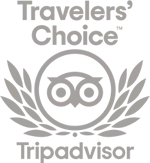Punta Niedda and Punta Su Mastixi
A Volcanic legacy
The origin of the beaches of Punta Niedda and Punta Su Mastixi is closely linked to that of the volcanic plateau of Teccu, which overlooks Barisardo. Teccu dates back to the Pleistocene and was formed following a lava eruption that probably occurred near the Sa Ibba Manna relief. The lava flow reached the sea, forming the two extremities of Punta Niedda and Punta Su Mastixi.
Punta Niedda is jagged and its basaltic rocks penetrate the sea for several tens of metres. The characteristic dark colour of the rocks of volcanic origin (“Punta Niedda” means Black Point) contrasts with the light colour of the rocks of the cove that connects Punta Niedda with the shore.
The beach
Speaking of Punta Niedda, there are some interesting historical hypotheses. Some scholars believe that it was an important landing point in the Phoenician-Roman period for the purple trade.
Another hypothesis, however, concerning a later historical period, states that the Spanish tower erected in the current location of Torre di Barì, in reality, should have originally been built precisely at Punta Niedda.
Further south, after having crossed the eastern side of the Teccu plateau, along a small asphalt and then dirt road, you arrive at Punta Su Mastixi. What is immediately striking about this solitary and wild place is the very strong scent of wild herbs which, as you gradually descend towards the cliff, blends with that of the sea. Like Punta Niedda, Su Mastixi is also a cliff made up of basaltic rocks, which in contact with water take on an even darker, charcoal-like colour.
How to get here
The beaches of Punta Niedda and Punta Su Mastixi are located immediately south of Cea beach and to reach them simply take the same road you take to get to Cea beach.




